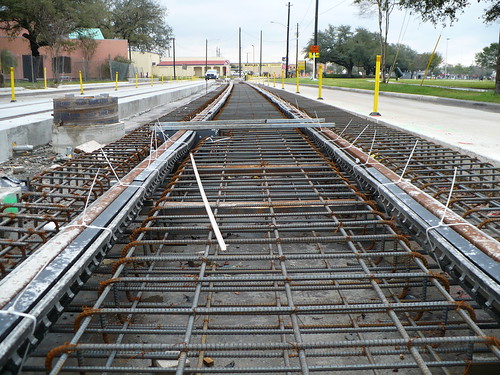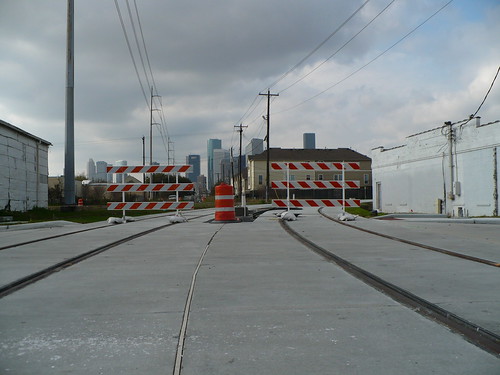In November an Indianapolis group called
Indy Connect released their long range vision for transit in the region. It's chock full of all the stuff transit geeks love including lines on maps. I'm not going to go into the details of the plan as Yonah at Transport Politic has already got
that angle. Additionally, the locals at Urban Indy have done a good job getting the
initial reactions from folks on the ground.
But I definitely approve of bringing down the bus headways to real levels that would start to make ridership equal that of other regions of similar size. Places like Austin, Columbus, and Charlotte are
similar size with daily ridership
much higher.
Austin - 108,300
Columbus - 58,400
Charlotte - 103,500
Indianapolis - 29,700
But that's not really the issue I wanted to address. Also in the plan are several commuter rail lines, light rail, and BRT that isn't really RT due to its lack of dedicated lanes in the plan. The light rail has been pushed back I'm assuming based on cost and the first rail corridor they want to build is the Northeast Line. While this looks like the deal of the century, they should really take advantage of the fact that they are late to the Transit Space Race by looking at what other regions have done and the consequences of their actions.
Politically it looks like a short term winner with a long term loser. Build the commuter rail line on an existing freight rail ROW on the cheap to get voters in suburban jurisdictions to buy into the plan. They'll vote for it because its cheap and the voters of the main jurisdiction will think they are getting a rail line because that's what you're selling with pictures of commuter lines in Chicago and Philadelphia and Austin. But the people that really want it will just get bus lines for their trouble.
Curious that last city I listed. Because they went first, Austin tested the waters with this type of plan. Back in 2000 there was a light rail election that lost by less than 2,000 votes because George Bush was on the ballot among other reasons. That line would have hit all the employment centers and gotten about 37,000 riders, more than all of Indianapolis' transit does now. But it lost, so in 2004 Austin got the politically palatable solution that is now a commuter rail line taking about 800 riders a day from Leander to the North to the outskirts of downtown Austin. Take a look at these cities aerial photos and let me know if you see something familiar.
Indianapolis - Left Yellow is the University, Middle Yellow is Downtown, State Capital and the red line is the commuter rail.

Austin - Top Yellow is University of Texas, Bottom Yellow is State Capital and Downtown


See a resemblance? Both lines skirt places people want to go. Austin's line gets around 800 riders a day. For the last 6 years Austin has been discussing urban rail to go places where the commuter rail line did not go. However the plan keeps getting pushed back for a number of different reasons that are mostly political. But if they would have done the right line first, neighborhoods all over the city would be begging for extensions to a current system. The politics would be a no brainer but as it currently stands, people are still a little hesitant to put their money where their mouth is in terms of an actual urban rail plan in Austin. That's not to say they aren't working on it, but it's a very uphill battle.
That's the political price that Indy is going to pay if they build the
NE Corridor first. Forget all the good will of increased headways and higher ridership for the rest of the system. Charlotte has shown that people won't remember you for your increased ridership. I'm guessing that before the 1998 sales tax increase, Charlotte was in a similar place as Indianapolis is now. But the opposition picked apart the half cent mercilessly and focused on the train. Luckily the train was a success and Charlotte saved their half cent sales tax from repeal, but the attack was on right away. So in a place like Indy where people are much more afraid of taxes for these types of expenditures, if you're going to build a line, do it right or that cheap victory is going to end up being an expensive long term defeat.
But where should the line go? Well let's look at Austin's 37,000 expected ridership year 2000 alignment or Houston's line that passes 290,000+ jobs or even Phoenix which hits the major downtown corridor and Arizona State. It's about the job connections. These lines connected jobs to people. So where are Indy's jobs?
Looking at LEHD data from
On the Map, we can see that employment is clustered around the CBD and State complex. The University is a major employer as well to the west of the downtown cluster with the big red dot. (Red = 10k jobs)

But take a look at where the Red line goes, which is the Northeast Corridor. The yellow line is my idea of where a transit corridor should be. And while there are is a fake BRT corridor that goes where the Yellow line is on the map above, it won't get the same type of TOD investment and revitalization they are hoping for unless they rig the headways really high to 5-10 minutes for Rapid service all day or build dedicated lanes for rail or bus.
But the other reason I think that Yellow line is key is because if you look at where the downtown workers actually live at densities that might warrant transit capacity like that, it's not on that red line but up the yellow one. Again LEHD data:

You could also make a strong case for the light rail line if it were a bit north on the West side and crossed downtown and hit the University. While the commuter rail line might be a good idea for a mature transit system, it's future political suicide for expansion prospects. The reason being is that the region is not going to get any worthwhile excitement in terms of sheer ridership numbers for a starter rail line. Houston got ~40,000 riders to start. Charlotte got ~16,000 riders to start and Phoenix is at ~35,000 by connecting major destinations on the corridors. If this line is like Austin and so far its looking like that is the case, I'm going to bet on an anemic 500-2000 riders at most.
Again that is a short term win looking for a long term loss. If I were Indy, I would start pushing hard to have that North BRT line dedicated ROW, or do a
tram-train to Noblesville. The tram-train is likely to get killer ridership and suburban support. There is the benefit of learning from those who have gone before and made the mistakes. No need to make them again so that you're hamstrung into the future. I'm all for trains as people who have read this site over the years know, but do it right, or don't do it at all.



















